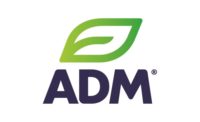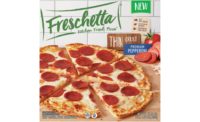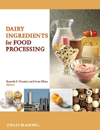Exclusive Q&A: How the Food Labeling Modernization Act will affect consumers

Snack Food & Wholesale Bakery was able to speak with Claudia A. Lewis, co-chair of Venable LLP’s FDA Group and a key member of the firm’s Food and Drug Law and Regulatory practices, about the Food Labeling Modernization Act.
The Act would require updates to the ingredient list on packaged foods and apply consumer-friendly labeling requirements. It calls on new guidelines for the use of the word “healthy,” and for HHS to establish a single, standard front-of-package nutrition labeling system, and other standards to help consumers make healthier nutrition choices and avoid misleading, deceptive pitches and promotions.
Liz Parker: What are some top areas of concern with the Act, specifically in the snack and bakery sector?
Claudia Lewis: That's a good question. As you know, food safety is updated and it's predicated on making sure the food supply is safe and making sure that the information that is given to consumers is transparent and understandable. What we see with this new Modernization Act is that now one of the main provisions of the bill requires [food to] bear summary nutritional information that reflects the overall nutritional value of the food. And that's a departure—we're all used to the nutrition facts panel having how many calories from fat, how much sugar is in the product, etcetera.
We're used to seeing a breakdown of vitamins and minerals, based on the serving size and things like that, and now, for the first time we're seeing additional information about the nutritional value of the product. And it has to be on the PDP [principal display panel] as opposed to the back panel or side panel. Normally the PDP is reserved for a branding statement or identity, like this bread or this sauce. Some companies do like to say [their products are] organic, or non-GMO, and what we're seeing now is we're going to have to talk to about whether this is considered a nutritionally viable-type product.
The second thing I would say is that the HHS (U.S. Department of Health and Human Services) is required to create a standardized symbol system where it displays the calorie information, information on saturated or trans fat, sodium, sugars, and any other nutrients that my strongly be associated with public health concerns, so think about ingredients that might have impact on cholesterol or resting glucose levels. These symbols are supposedly designed to clearly distinguish between products have greater or lesser nutritional value. For example, products that are high in saturated or trans fat, sodium, or added sugars might have a stoplight or there might be a number of stars to rank the foods according to their overall health value.
This is interesting because now we are taking it a step further—you might remember that restaurant menus had talked about what the caloric value is of [items on their menus] such as a bagel versus a muffin. So this takes it a step further: where you're eating a snack food, you're going to have a greater understanding provided to you. [For example], products that have high fat, are high in sugar, or high in salt are going to have to signal to you that they may not have the nutritional value that you understood, or that it's not the best option.
LP: What are some required updates to the ingredients list on packaged foods, due to the new Act?
CL: So now there must be a standardized symbol system that displays caloric information per serving—informational on saturated and trans fats, sodium, and added sugars—and this is in addition to what you normally find on the nutrition facts panel. So all that information is already on the label, but now it's going to be highlighted on the front of the package.
If I were to talk about this scale system—not all fats are created equal. We need some salt, some sugar in our diets—not all sugars are horrible—so I feel like some of these snack or bakery sector products might have these warning symbols but the products might not be absolutely unhealthy.
So if two snack foods both get a red stop light warning, it may be difficult, as a practical matter, to position one as a healthier choice [over] the other. For example, if the saturated fat [in one product] is olive oil versus another type of oil, the rule might not allow it to distinguish itself.
LP: How will the new bill overhaul food labels?
CL: Earlier this summer, FDA did indicate that it plans to conduct several studies to evaluate consumer response and reaction, so the front of pack symbols on that manufacturers could voluntarily use—to understand whether consumers understood what the word "healthy" meant or whether [products are] bad for you. I don't know if that is underway, but I know they made an announcement in May 2021 about it.
So one of the things that you asked about is how the new bill overhauls food labels—there are lots of foods that bear claims like "whole wheat," "whole grain," "multigrain," and so on. Under this new bill, you would have to display the amounts of whole and refined grains in immediate proximity to the to the claim itself. If you have a claim like "fruit flavor," or "veggie," or "vegetable"-related on the PDP, you would have to display the quantity per serving of fruits or vegetables that are there, so consumers can understand if they are getting actual fruit, or just dried fruit—i.e., how much fruit are they really getting.
The bill also defines artificial and synthetic, and they are also asking HHS to define "natural" and "healthy"—we already have a definition of "healthy" but we are still waiting on FDA to define the term "natural." They already had a mandate to determine "natural" so it's interesting to me that we are looking at the word "natural" again.
FDA is also looking for an update on the level of sodium that requires disclosure, so there are some thresholds about how much sodium can be in a product before you have to declare it. This bill requires HHS to re-evaluate that.
Looking for a reprint of this article?
From high-res PDFs to custom plaques, order your copy today!










